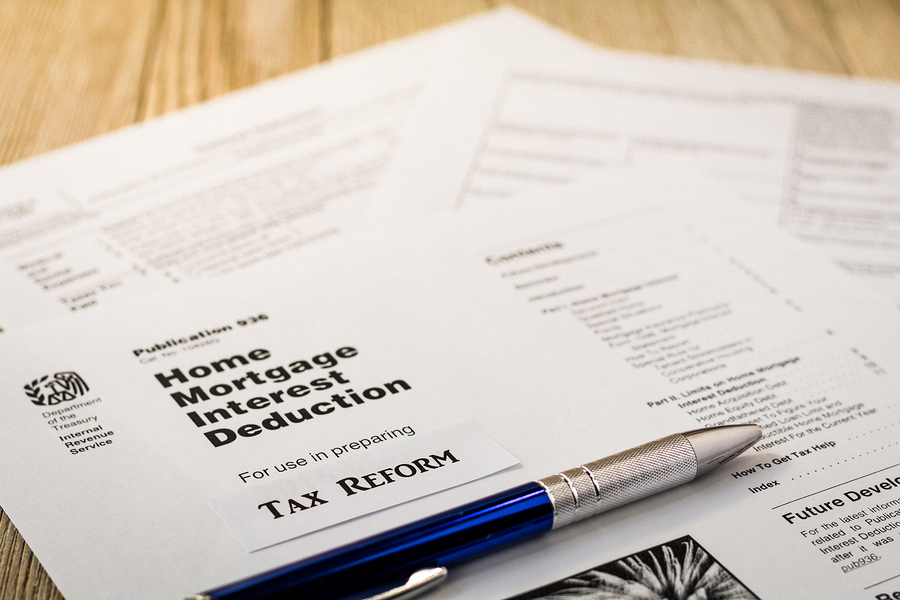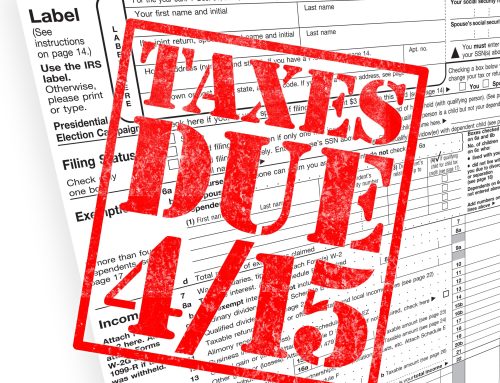Article Highlights:
- Background
- New Limit
- Equity Debt Interest
- Interest Tracing
- Refinancing
The Tax Cuts and Jobs Act of 2017, more commonly referred to as tax reform, substantially altered the itemized deduction for home mortgage interest and affects just about everyone who has been deducting their home mortgage interest as an itemized deduction on their tax returns.
Your mortgage is often the biggest expense in your bills so you work hard to ensure it is as low as possible before accepting it so you don’t want any new laws muddying up your finances. Some people even spend a long time building their credit score after getting one of the credit cards for people with no credit, in hopes of getting a better interest rate. If you’ve worked hard to get a mortgage, everything you need to know is below:
Background: To fully understand the impact of the law changes, we need to compare the prior tax law to the new tax reform. Under prior law, a taxpayer could deduct the interest he or she paid on up to $1 million of acquisition debt and $100,000 of equity debt secured by the taxpayer’s primary home and/or designated second home.
Qualified home acquisition debt is debt incurred to purchase, construct, or substantially improve a taxpayer’s primary home or second home and is secured by the home. The interest paid on up to $1 million of acquisition debt has been deductible as part of itemized deductions on Schedule A. If you’ve just purchased a home, make sure you get a USA Home Warranty to protect your belongings.
Home equity debt is debt that is not acquisition debt and is secured by the taxpayer’s primary home or second home, but only the interest paid on up to $100,000 of equity debt had been deductible as home mortgage interest. Often, home equity debt is used to purchase a new car, finance a vacation, or pay off credit card debt or other personal loans – all situations in which the interest on a consumer loan obtained for these purposes wouldn’t have been deductible. Home equity may be a good way to make use of cash that you didn’t actually know was there for you to use, but the option of taking out a personal loan should never be overlooked. You can have a look at some of the best personal loans for bad credit if this is the kind of loan that could help you and your finances greatly.
The old law continues to apply to home acquisition debts by grandfathering the home acquisition debts incurred before December 16, 2017, to the limits that applied prior to the changes made by tax reform. As explained later in this article, equity debt interest didn’t survive in the tax reform’s legal changes.
New Acquisition Debt Limits: Under the new law, which took effect for home acquisition loans obtained after December 15, 2017, the acquisition debt limit has been reduced to $750,000. Thus, if a taxpayer is buying a home for the first time, the deductible amount of acquisition debt interest will now be limited to the interest paid on up to $750,000 of the debt. If the home acquisition debt exceeds the $750,000 limit, a prorated amount of the interest is still deductible.
If a taxpayer already has a home with grandfathered acquisition debt and wishes to finance a substantial improvement on the home or acquire a second home, the new acquisition debt, for which the interest would be deductible, would be limited to $750,000 less the grandfathered acquisition debt existing at the time of the new loan. – You’ll discover that the new personal loans available on the market have ridiculously low interest rates, snap them up while you have a chance!
This may be a tough pill to swallow for many future homebuyers since the cost of housing is on the rise while Congress has seen fit to reduce the cap on acquisition debt, on which interest is deductible.
Equity Debt: Under the new law, equity debt interest is no longer deductible after 2017, and this even applies to interest on existing equity debt, essentially pulling the rug out from underneath taxpayers who had previously taken equity out of their homes for other purposes and who were benefiting from the itemized deduction.
Tracing Equity Debt Interest: Because home mortgage interest rates are generally lower than business or investment loan rates and easier to qualify for, many taxpayers have used the equity in their home to start businesses, acquire rental property, or make investments, or on other uses for which the interest would be deductible. With the demise of the Schedule A home equity debt interest deduction, taxpayers can now trace interest on equity debt to other deductible uses. However, if the debt cannot be traced to a deductible purpose, unfortunately, the equity interest will no longer be deductible.
Refinancing: Under prior law, a taxpayer could refinance existing acquisition debt and the allowable interest would be deductible for the full term of the new loan. Under tax reform, the allowable interest will only be deductible for the remaining term of the debt that was refinanced. For example, under the old rules, if you refinanced a 30-year term loan after 15 years into a new 25-year loan, the interest would have been deductible for the entire 25-year term of the new loan. However, under tax reform, the interest on the refinanced loan would only be deductible for 15 years – the remaining term of the refinanced debt.
Determining when home mortgage interest is deductible and how much was deductible was frequently complicated under the prior tax law, and the new rules have added a whole new level of complexity. Please call this office if you have questions about your particular home loan interest, refinancing, or equity debt interest tracing circumstances.







